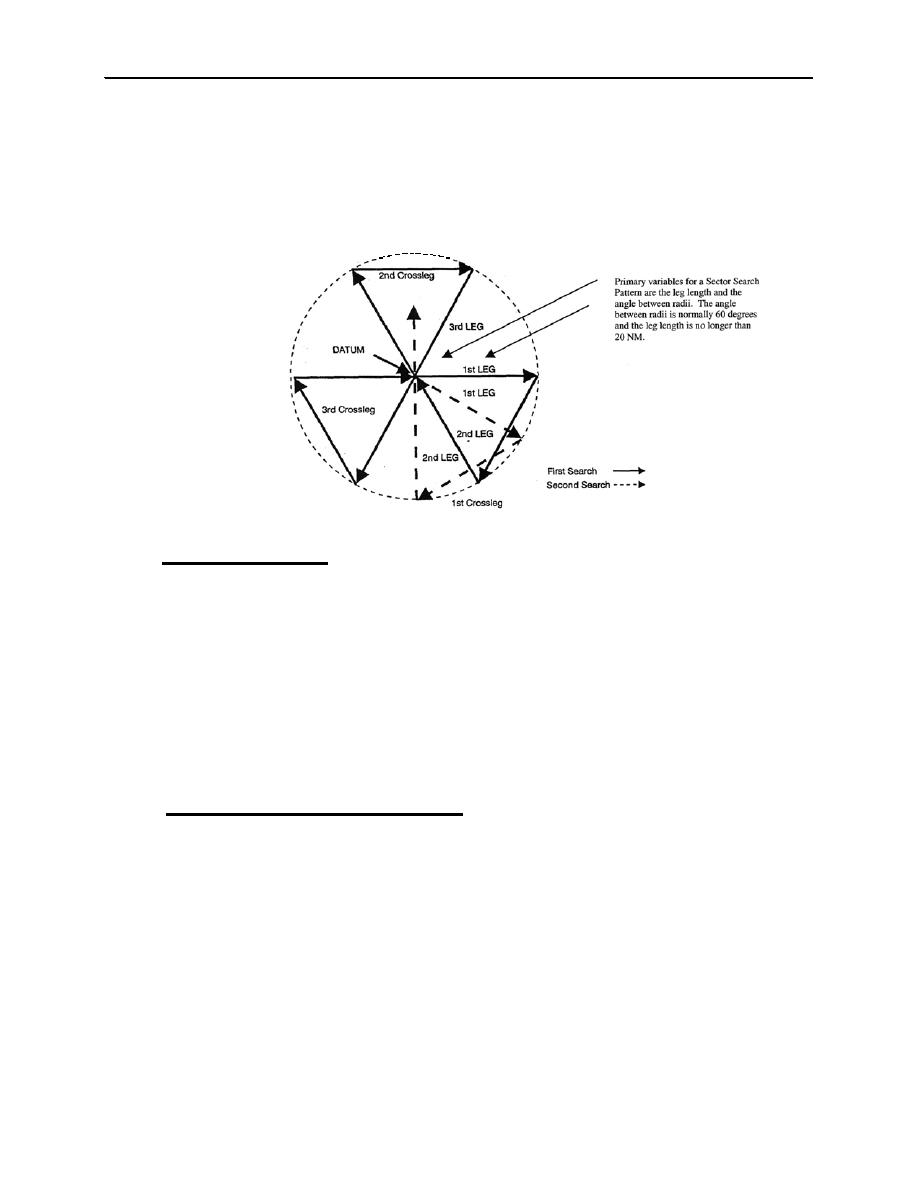 |
|||
|
|
|||
|
|
|||
| ||||||||||
|
|  JOINT ADVANCED MULTI-ENGINE T-44A
(5)
Sector Patterns (V). Sector search patterns are used when the distress position is reliable or the
area searched is not extensive, and a concentration of effort is desired at datum. The pattern resembles the
spokes of a wheel and is used to cover a circular search area. Variables for this pattern are the angle
between the successive radii and leg length from datum. Normally, 60 is used as the angle between radii,
and the leg length is no longer than the 20 NM long. Using a 60 radii angle, complete coverage of the
search area can be obtain by rotating the pattern 30, and executing the pattern again. See figure 8-8.
Figure 8-8
806.
Search Action Plan (SAP). SAP will normally include the following sections: situation, search area,
execution, required coordination, communications, and required reports. The SMC (via the RCC or Group
Operations Center) will develop and provide the SRU the SAP.
(1)
Situation Summary. The situation summary is an evaluation of the situation on scene, including
the nature of the emergency, last known position of search target, search target description, types of
detection aids and survival equipment which the survivors may have, present and forecast weather, and
SRU's on scene.
(2)
Search Area. Search area details include a listing of the search area and sub-areas that can be
searched by SRU's during the allotted time. Search area variables will be listed (CSP, track spacing,
required cover factor, etc.), and if required, air-to-air TACAN channel assignments will also be listed.
(3)
secondary, and tertiary control channels/frequencies on scene.
Scanning Techniques (Ref (a), pg. 6-9 thru 12). A searching SRU is primarily a platform for scanners.
807.
The success of a search may ultimately depend on the number and effectiveness of scanners. The
maximum number of scanners should be onboard the SRU during a search. However, all of the scanners
do not need to be in the windows at the same time. At the Aircraft Commander's discretion, scanners may
be rotated in and out of rest periods to prevent fatigue from seriously degrading the SRU's search
capabilities. This is especially true when doing low-level (200 to 300 feet search) PIW (Persons In the
Water) searches.
(1)
occupy the best lookout positions on most aircraft. If no forward station is available, the burden of
scanning is placed on the pilots. Coast Guard fixed wing aircraft (HU-25A & HC-130H) also have
excellent scanner positions on the sides of the aircraft.
(2)
Motivation. Motivation affects the performance of the entire crew. During the early stages of a
search, motivation is high. This decreases as fatigue sets in and hopes of finding the survivor decreases.
SEARCH AND RESCUE FUNDAMENTALS
8-5
|
|
Privacy Statement - Press Release - Copyright Information. - Contact Us |